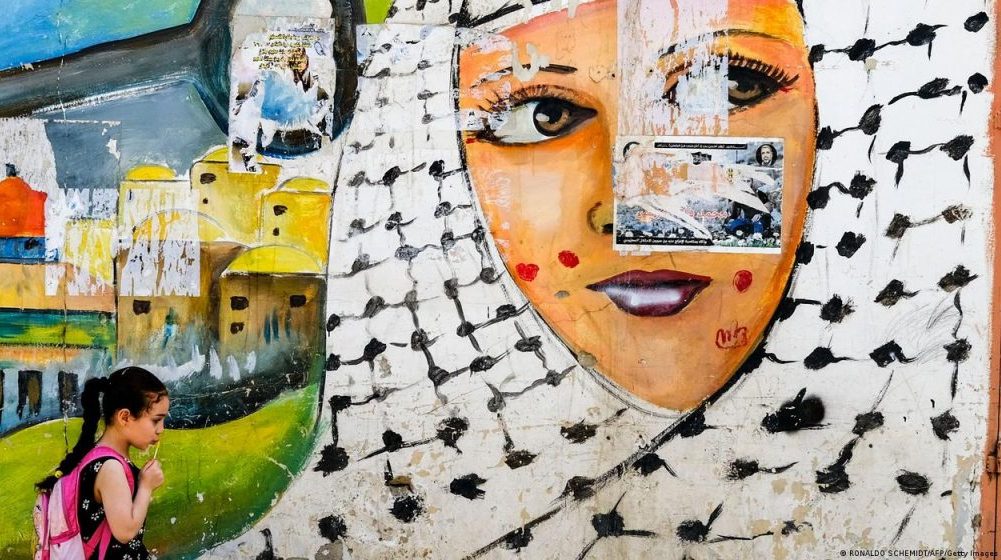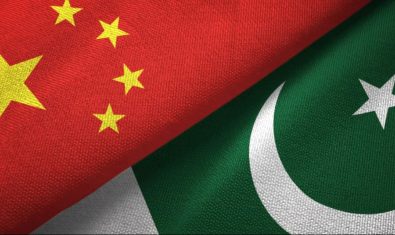On May 15, Palestinians around the world commemorate 75 years of having lost their homeland. What is the Nakba, how does it tie into the Israeli-Palestinian conflict, and why is it still relevant today?
What does Nakba mean?
The Arabic word Nakba means catastrophe or disaster. In reference to the Israeli-Palestinian conflict, the term Nakba or al-Nakba refers to the Palestinians having lost their homeland during and after the 1948 Arab-Israeli war.
It’s thought that around 700,000 people in what is now Israel and the Palestinian Territories either fled or were forced from their homes. A connotation of Nakba points to the problem that many Palestinian refugees abroad remain stateless to this day.
What is Nakba Day?
May 15, 1948, was the beginning of the Arab-Israeli war and has long been a day that Palestinians take to the streets and protest against their displacement. Many carry Palestinian flags, bring the keys to their former homes or carry banners with the symbols of keys. The keys illustrate the hope of returning home and what the community sees as their right to return. In the past, some protests have turned into violent clashes. Israel accuses Hamas and other organizations that are listed by the EU and others as terror organizations of using the day to further their causes.
The term Nakba Day was coined in 1998 by then-Palestinian leader Yasser Arafat. He set the date as the official day for the commemoration of the loss of the Palestinian homeland.
Why did Palestinians have to leave?
Until the end of WWI, Palestine was under Turkish rule as part of the Ottoman Empire. It then fell under British control, the so-called British Mandate. During that period — which was marked by growing antisemitism in Europe — an increasing number of Jews from around the world moved there, which to them is their ancestral homeland: Eretz Israel, the Promised Land where Jews had always been living, albeit in much smaller numbers.
After the experience of the Holocaust in Nazi Germany, a United Nations Partition Plan for Palestine was adopted by the UN General Assembly. The Arab League rejected the plan. The Jewish Agency for Palestine accepted. On May 14, 1948, the State of Israel was proclaimed.
As a reaction, a coalition of five Arab states declared war but was eventually defeated by Israel in 1949. Before the war, between 200,000 and 300,000 Palestinians had already left or been forced out and during the fighting, a further 300,000 to 400,000 Palestinians were displaced. The overall figure is estimated to be around 700,000 people.
During the war, more than 400 Arab villages were destroyed. While human rights violations were committed on both sides, the massacre of Deir Yassin — a village on the road between Tel Aviv and Jerusalem — is particularly engraved in Palestinian memory to this day. At least 100 people were killed, including women and children. It triggered widespread fear among Palestinians and prompted many to flee their homes.
By the end of the war, Israel held around 40% of the area initially earmarked for the Palestinians by the UN partition plan of 1947.
Where did they go?
Most of the Palestinians ended up as stateless refugees in the Gaza Strip, the West Bank, and neighboring Arab countries, only a minority moved further abroad.
Until today, only a fraction of the next-generation Palestinians have applied for or received other citizenship. As a result, the vast majority of the currently around 6.2 million Palestinians in the Middle East have remained stateless into the third or fourth generation.
Where do they live today?
According to the UN’s dedicated Palestinian refugee agency, UNRWA, most Palestinians in the region still live in refugee camps which over time turned into refugee towns. They are mainly based in the Gaza Strip, in the Occupied West Bank, Lebanon, Syria, Jordan and East Jerusalem.
The international Palestinian diaspora is estimated to have increased to some 6 to 7 million people. If accurate, this would put the total number of Palestinians close to 13 million people. There is however no global body keeping track of Palestinians in the diaspora and accurate data is not available.
What is the Palestinian right to return?
According to the United Nations General Assembly Resolution 194 in 1948, as well as the UN Resolution 3236 in 1974, and the 1951 Convention on the Status of Refugees, Palestinians who are considered Palestinian refugees have the “right of return.”
Israel however is rejecting the “right of return” for Palestinians stating that this would mean an end to Israel’s identity as a Jewish state. Israel denies responsibility for the displacement of Palestinians and points out that between 1948 and 1972 around 800,000 Jews were expelled or had to flee from Arab countries like Morocco, Iraq, Egypt, Tunisia, and Yemen.
Are there suggestions for solutions?
Over the past 75 years, there have been different approaches to resolving the Palestinian issue. The most significant one remains the two-state solution with Israel and a future Palestine dividing Jerusalem into two capitals. However, there are doubts on both sides over how realistic this would be.
Critics point to the increasing number of Jewish settlements in the occupied West Bank which could rule out a united Palestinian territory.
Other suggestions are the recognition of the refugee status by Israel and compensation but without a return, limited resettlement, or a two-passport system in one state.
However, a tangible solution remains out of sight, for now.





















